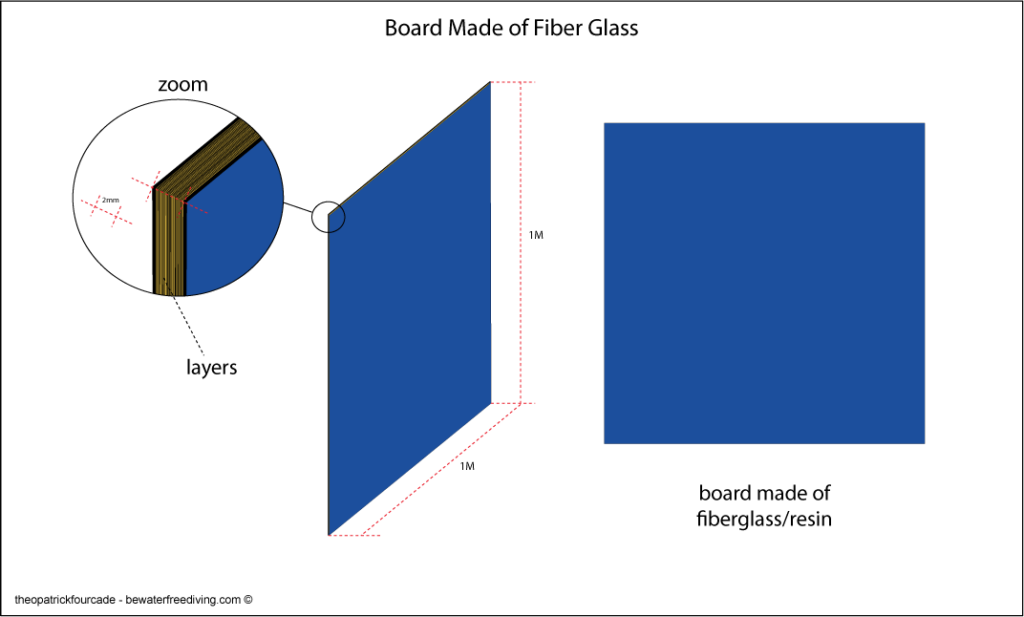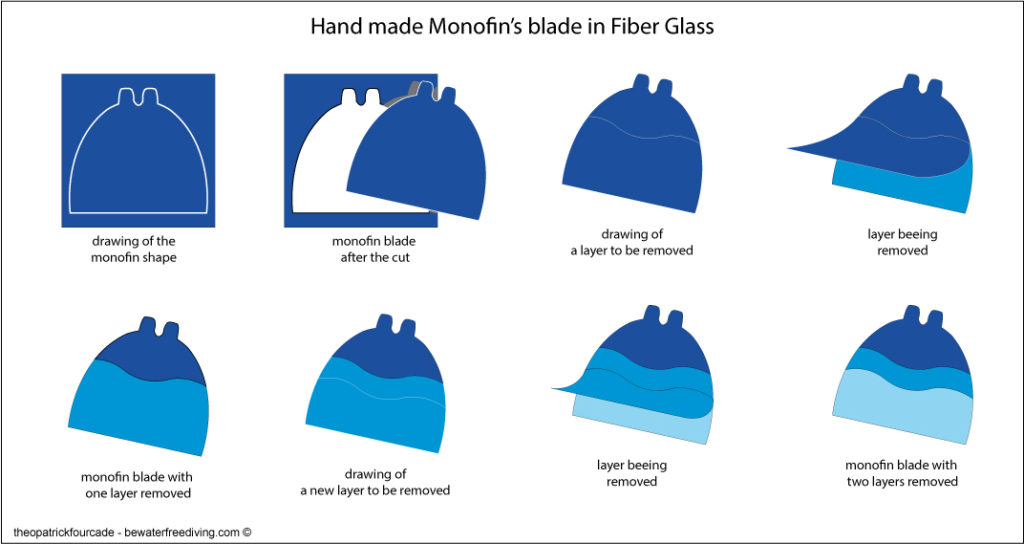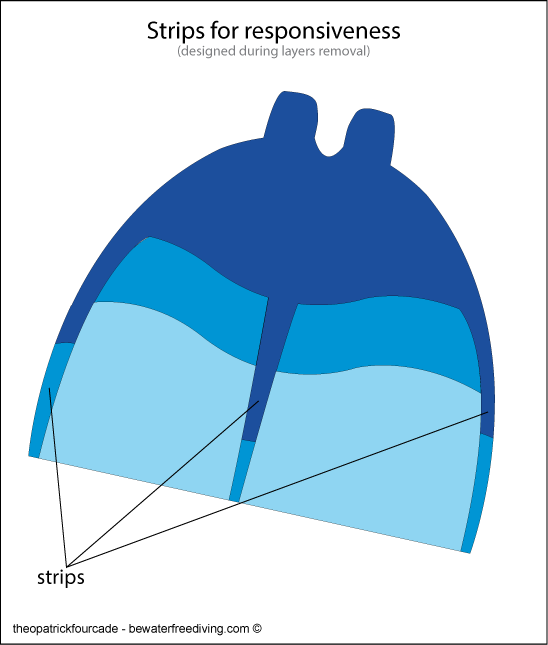As I have written previously, in the 70s, the first monofin blades were made of fiberglass. At this time, the fiberglass used for monofin blades by the Russians was not purposely made to become monofin blades.
The rough, original fiberglass was a sheet of fiberglass approximately 1mx1m and the thickness was around 2-2.3mm. To reach a thickness of 2-2.3mm, it required around 20 to 23 layers of fiberglass. This board was covered on one side by a thin layer of copper (which would later be removed, with other modifications, to transform into the current monofin blade).

How was it made?
When we talk about the fiberglass blade, the blade was made from fiberglass and resin. In a rough state, this fiberglass was just a thread. This thread was woven to make a kind of fabric (warp and weft). Imagine a roll of fiberglass fabric: it is cut lengthwise until there are 20 pieces of same dimension. After superimposing the 20 pieces of fiberglass, they are soaked with resin (in liquid state) and the entire product is pressed with a big hot hydraulic press. In the end, you have a board of fiberglass and resin (Fig.1). This whole board of fiberglass was used as an insulator against fire in Russian submarines. The creative Russian designer was excellent in finding this board to make a blade for the monofin.
But they needed to transform the fiberglass board into a monofin blade. Effectively, a swimmer cannot use a blade with a 2mm thickness, the designers would have to remove some layers. Removing layers help define the hardness and the softness of the blade. To start, the first thing they had to do was to draw and cut out the design of the board into the shape of the monofin blade. The second step would be to define the hardness or softness of the monofin blade by drawing on the layers that would need to be removed from the top to the bottom of the blade. This means that under the feet, the blade would be thicker, and the end would be thinner.

By deciding where to remove layers, they are also able to decide where they want to fix the folding point of the blade. The folding point is very important to assign a blade for underwater races or surface races. Here, we are interested in underwater blades for freedivers, so the folding point would have to be in the middle of the blade.

Designers can also increase the responsiveness of the blade by leaving some thicker strips on it. When the blade folds during swimming, these strips help the blade snap back faster after being deformed.

How were they able to remove layers?
They used specific tools: the first tool was used to cut the layers (the ones to be removed), and the second tool was used to separate the sealed layers. The first tool looks like an ice pick (used as a cutter, they “engraved” the blade, just enough to cut one layer at a time*) and the second tool looks like a long knife with a rounded tip and a thin blade (they forced the thin blade with the rounded tip into the layers to separate them little by little). The skills needed to be able to remove layers are amazing; the people who made blades like this are really talented craftsmen!
Today, even though some blades are still handmade, new industrial processes are being used to build monofin blades. The construction of these new blades are more simple and basic. This kind of blade, from my point of view, doesn’t look like pieces of art anymore. Industrial processes use pre-impregnated fiberglass (PIFG – the fiberglass fabric is already soaked in resin in a solid-state, which facilitates all the manipulations and cuts). They cut the PIFG into the dimensions they want before putting it under the hot hydraulic press and superimposing them. The layers compose a board from thick to thin. After being pressed and cooked, the board will be done, they just need to cut the outside shape of the blade; this process is faster.

Advantages and disadvantages :
– First method: extreme customization, a unique piece of art, requires very hard and long work. It needs a lot of experience to understand all the parameters to customize the blade. You will never have two of the same blade because it is impossible to exactly reproduce it.
– New method: once the designers improved the blades, the process is easy to control and quick to produce. They will be able to reproduce the same blade (hardness/softness) over and over again and that is really great! I would like to add that from my point of view this kind of blade should lose effectiveness, compared to the handmade blade, because there are no more strips enhancing the responsiveness.
What about carbon blades?
Carbon blades are lighter and “stronger”, which means that it needs less layers of carbon to reach the same hardness as fiberglass, resulting in the blade
I use fiberglass! If your monofin technique and your physical condition are weak, there is no need for you to use a carbon blade.
So…
GO PRACTICE!
Theo-Patrick FOURCADE
Next post : What about foot pockets, wings and rubber strips (or “the rails”)…
You are welcome to use information from the blog, but please specify the source with a link: Theo-Patrick FOURCADE – bewaterfreediving.com ©
All the illustrations are copyright ©, please ask me before use.


Quelle connaissance quel travail
Bravo
Belle analyse, merci Théo !
Merci 🏆Walid🏆 ! ✌🏻
Les Strips aident aussi à diriger le Flux d’eau en le concentrant vers le milieu de la voilure favorisant un meilleur appui.
C’est exact! Merci Christophe pour ce complément d’information.